Ultraviolet lamps for plants: features, types and rules of use
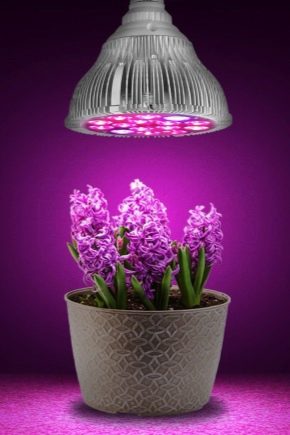
Russian summer is not enough to charge indoor plants with energy and vitality for the whole year. Short daylight hours between seasons and winters provide insufficient light for flowers. At the same time, for many people, green spaces in the house are not only a way to decorate a room and give it comfort, but also a source of additional income. For a plant to be pleasing to the eye, to be healthy, it needs certain conditions for development. Light is one of the most important conditions for the growth and health of home flora.
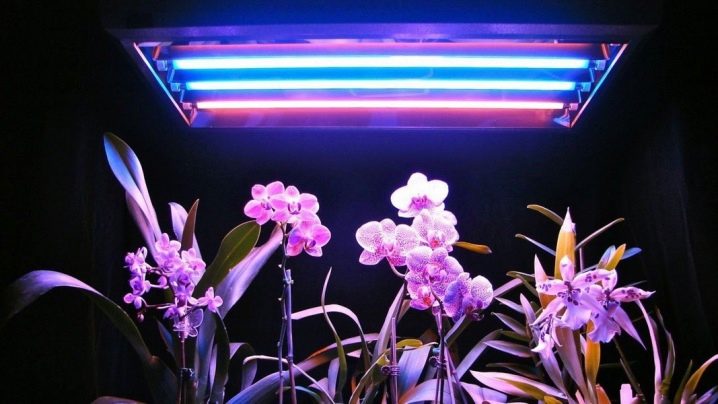
What is a UV Lamp?
For the growth, cultivation and prosperity of green spaces, an additional source of light is needed - an ultraviolet lamp for plants. Such a device for home use is also called phytolamp or greenery lamp. It has a great effect on the vital activity of plants, it is quite easy to use it. Such a device is suitable for almost all types and types of indoor flora, giving the right amount of light for their life.

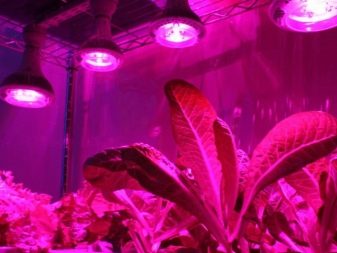
Phytolamp is a lighting device with an ultraviolet glow, intended for use in closed rooms in order to create an optimal light regime. You can buy it, or you can make it yourself. An artificial "sun" will provoke the processes of photosynthesis, the plant will release energy and oxygen as if it were growing under a real sun. Not all plant species require an auxiliary UV light source, but only those requiring long daylight hours. As a rule, this is tropical flora. The desire to minimize energy costs led to the invention of UV lamps.

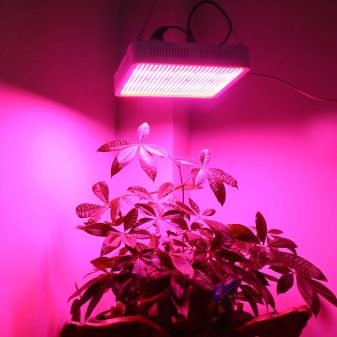
The benefits and effects of ultraviolet radiation
UV radiation in the form of light rays is a wave of different wavelengths (from 10 to 400 nm). Up to 200 Nm - far ultraviolet, which is not used for domestic purposes. Waves up to 400 Nm are divided into:
- shortwave - from 200 to 290 Nm;
- medium wave - from 290 to 350 Nm;
- far-wave - from 350 to 400 Nm.

In nature, ultraviolet light of long and medium waves acts. Plants cannot exist without UV exposure, it hardens greens, allows them to endure temperature extremes, nourishes and maintains plants. A correctly selected source of ultraviolet radiation can help new shoots, sprouts to appear, fruit to set, develop the crown and root system, slow down or accelerate flowering.
Home Garden Lighting
When choosing or creating UV lamps, it is necessary to be guided by the rules for lighting plants, otherwise the lighting device will not only not contribute to the development, but will also destroy the mini-garden. Requirements for the luminous flux from the phytolamp:
- it should be as close to a natural light source as possible;
- it is necessary to limit the glow time, individual for each type of plant;
- radiation of an electromagnetic nature from the device must be suitable for the conditions of the natural environment;
- the level of required radiation must not be exceeded;
- a minimum satisfaction of the need for ultraviolet radiation is sufficient.

UV lamps are classified and matched based on exposure. They can stimulate or inhibit flowering, accelerate the germination process, the emergence of shoots, and fruiting.
What is the threat of an incorrectly selected light source?
If you made a mistake with the choice of the lamp, the home flora will very quickly signal this with its state. You need to pay attention to the following signs:
- plant disease;
- the sudden appearance of insects, such as a spider mite;
- the plant does not bloom or bear fruit, although this is expected in terms of timing;
- leaf blades are faded, dull;
- leaf burns;
- the greens are withered, sluggish, drooping.

Application schemes
Apply lamps as follows:
- to completely replace natural light - this is only possible if the indoor climate is fully controlled;
- periodic use - relevant in the off-season in order to increase the duration of daylight hours;
- as an additional source of light - this is how photosynthesis processes are most actively stimulated.

How to choose?
Phytolamps are presented in three main types.
- LED. The most profitable option from the point of view of economy, since it has a very long service life and is characterized by low energy consumption. At the same time, they have an excellent effect on the development of flora, emit a little heat, and do not provoke moisture evaporation, which makes it possible to water the plants less often. In addition, such lamps allow you to change the shades of light. You can create them yourself.
- Energy saving. They are as easy to use as possible, just screw them into the chuck. It is important to choose the right type of glow: cold or warm. The first affects development and growth, the second affects flowering.
- Luminescent. When using them, there is no heating, respectively, there is no effect on the climate in the room. Models with blue lamps can be selected to accelerate photosynthesis.



Many vital processes of the home flora depend on the color of the radiation: red promotes germination, blue promotes cell renewal, purple is used to stimulate growth. Antibacterial UV lamps operating on the principle of tanning salons are categorically not suitable for plants, since the far ultraviolet emitted by these devices is contraindicated in flowers.

Recommendations for use
In order to use the UV device as efficiently as possible, you must take into account the rules for its use:
- to make the result more pronounced, bring the light source closer to the plant, if you want to reduce the effect, remove it;
- in the off-season and in winter, increase the time the plants stay under the phytolamp by 4 hours;
- make sure that the stream of light is directly directed towards the flower;
- keep in mind that in high doses, ultraviolet light negatively affects people, animals and plants, therefore the use of lamps must be constantly monitored.

There is practically no harm to humans from such devices, since their radiation is commensurate with the sun. But in large doses, it is harmful, therefore, it is impossible to constantly be under a light source and look at it. When buying a device, pay attention to the parameters that allow you to protect living objects from its effects.
- UV emission should be negligible.
- Select the device strictly according to the purpose. There are different lamps for each purpose - for photosynthesis, germinating seeds, accelerating flowering, etc.
- The spectrum and angle of radiation must be selected correctly.
- Adequate product size is a very important parameter. It should not exceed the area to be illuminated.

You can build a UV lamp with your own hands, but this will require at least basic knowledge of electrical devices. In stores, you can purchase an assembly kit, which already contains all the necessary materials, or you can buy each item separately.
Model rating
The modern market is saturated with a variety of UV devices from various companies and countries of manufacture.
- "Ladder-60". Suitable for greenhouses and apartments, fastened with cables. Able to act as the only light source. Promotes rapid growth, increased fruiting.Service life - up to 60 months.

- "Minifarmer Bicolor". Ideal for use at home, increases the rate of fruit ripening, the appearance of flower ovary, stimulates all stages of flora development. the LED device is equipped with lenses that increase the spectrum of exposure. Screws into the chuck, requires ventilation.

- "Bright Light Fito". Dual-mode lamp, used as backlight and main light emitting, does not harm the eyes, is economical in terms of energy costs. Has a blue backlight and a mode for flowering and fruiting.

- "Solntsedar Fito-P D-10". The device is protected from moisture and dust, suitable for use at home and greenhouses. Equipped with lenses, plastic light diffuser. It is possible to adjust the direction of the light beams. It is able to positively influence the cultivation of fruits, herbs, berries. Increases productivity by about a third. The energy consumption is very modest.

- Philips Green Power. Phytolamp of sodium type. Suitable for shrubs, low-growing plants. The degree of light output is the highest; it is used in greenhouse and greenhouse premises. Accelerates seedling germination, optimal for exotic tropical plants. Has a blue backlight. The energy consumption is low, the glass is highly durable, and the lifespan is very long.

- "Flora Lamps E27". One phytolamp is enough for several growing crops. It can be used in greenhouse and greenhouse premises. Equipped with red and blue backlighting. Perfectly stimulates photosynthesis, inexpensive, not energy-consuming, service life - up to 60 months.

- Fitowatt Harau. The device is distinguished by its low price, convenient installation, and good power. Suitable for any enclosed space, it can be used at any stage of growth. There is a power switch. Available in 4 sizes, allowing you to choose the right model.
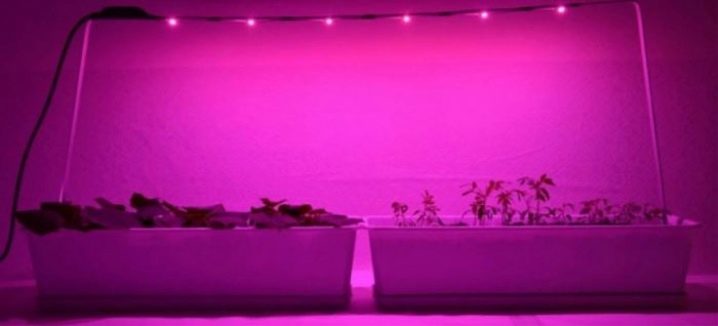
- SPB-T8-Fito. Suitable for beginner gardeners, as it has a very simple design. Optimal for a variety of crops. Suspended on ropes, placed at any distance from the flora, does not give heat. Has a red backlight, the light is not harmful to the eyes. Perfectly stimulates the growth and strengthening of roots, tops, leaves. Reduces humidity and evaporation processes, allows less watering of plants.
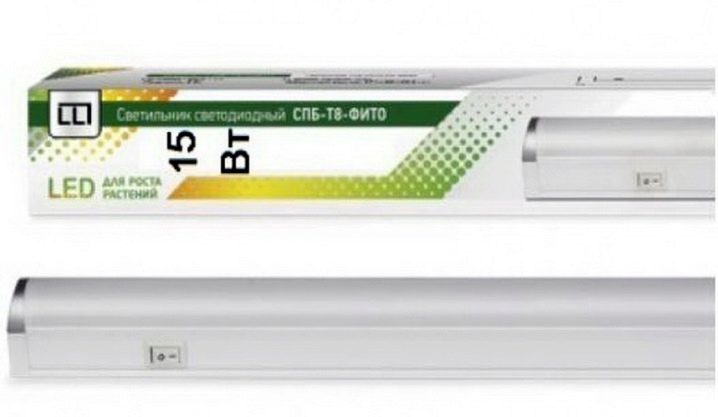
- Jazzway PPG T8. The lamp is sold in almost all specialized retail outlets. Good for crops of a fruiting species, equipped with blue and red illumination. Perfect for indoor use. Service life - more than 25 thousand hours.

- "Luchok 16 W". It copes best with seedlings and indoor flowers, will have a positive effect on the processes of their flowering, fruiting, growth. Light emission does not harm the eyes. The device is lightweight, does not overheat, can be located at any distance and height from them.

For information on how to choose the right UV lamp for plants, see the next video.













Ultraviolet radiation is electromagnetic radiation that occupies the range between X-ray and visible radiation (wavelength range from 100 to 400 nm). There are several sections of the ultraviolet radiation spectrum that have different biological effects: UV-A (315-400 nm), UV-B (280-315 nm), UV-C (200-280 nm), vacuum UV (100-200 nm) ... UV spectrum: from the entire UV range, the UV-C area is often called bactericidal because of its high disinfection efficiency against bacteria and viruses. The maximum bactericidal sensitivity of microorganisms occurs at a wavelength of 265 nm. It is in this part of the spectrum that the wavelength generated by low-pressure bactericidal UV lamps falls - 254 nm, which practically coincides with the peak of the bactericidal efficiency curve.
The comment was sent successfully.